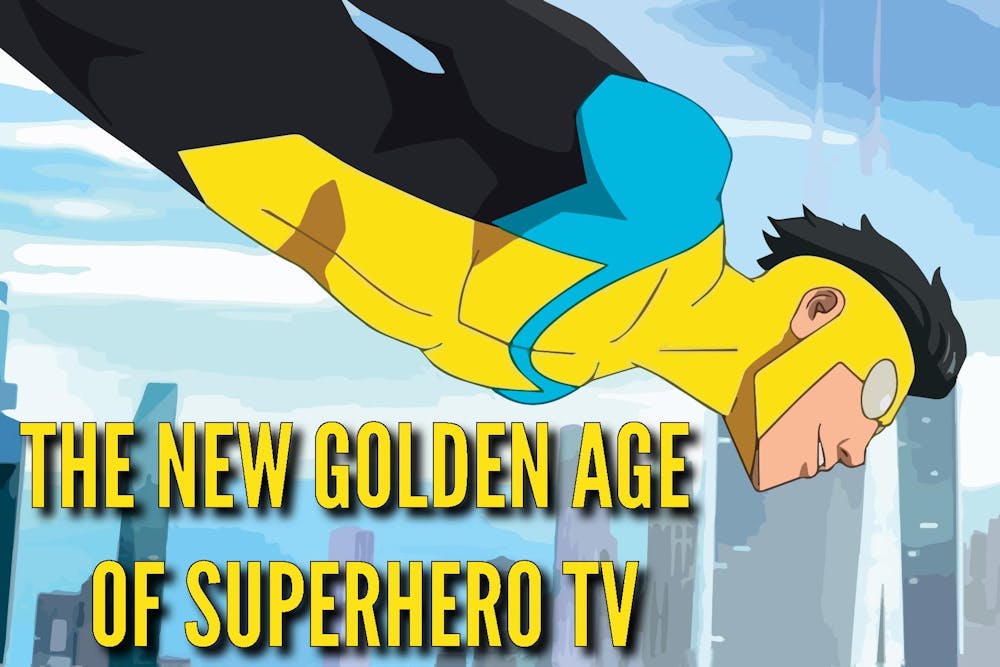When talking about the highly respectable, never-mocked, distinguished artform of comic books, typically the artform is separated into multiple time periods: the Golden Age (1930s to mid ‘50s), the Silver Age (Ending around 1975), the Bronze Age (1975 to 1985) and the vague “Modern Age,” which is anything after 1985. Realistically, this “Modern Age” can also be broken into segments. I would divide this age into the “Deconstruction Era,” comprising of stories such as “Watchmen” and “The Dark Knight Rises;” the “Extreme Era,” which focuses on the rise of anti-heroes (Deadpool, Spawn, the Punisher) and independent publishers such as Image Comics; the “Throwback Era,” where every publisher rebooted or rewrote their heroes to resemble younger versions of themselves and lastly the “True Modern Age,” which is anything from around 2016 onwards, where the trends are harder to see. This is simply my opinion, though. And this only covers comic BOOKS, and if the last two decades have demonstrated anything, there’s far more to the industry than the publications.
While movies have dominated the comic-book industry for decades, dating back to the 1940s, television has also consistently been a home for these characters. In the 1960s and ‘70s, there were a slew of live-action and animated superhero programming, adapting characters such as Batman, Spider-Man, the Hulk and Wonder Woman. And this trend never stopped. From the Saturday-morning cartoons of the ‘80s, to classics such as “Batman: The Animated Series” in the ’90s, to the beloved “Spectacular Spider-Man” of the late 2000s, comic books — specifically superheroes — have always had a place on TV screens. I believe that this current decade might be the best for the genre.
Current comic-book television goes beyond superheroes, in multiple senses. While Neil Gaiman’s long-running “The Sandman” is published by DC Comics, I wouldn’t classify it as a superhero series, and the television adaptation on Netflix definitely does not follow superhero conventions. Similarly, the show/book’s spin-off “Dead Boy Detectives” is based in Gaiman’s comics, but it is not superhero fare. Rather, it’s based more on noir and gothic horror.
Even when addressing the superhero genre, television adaptations tend to go more into subversive territory. “The Boys” and “Invincible,” both streaming on Amazon Prime, ask audiences to come in with an established notion of what a world with superheroes would look like and operate based on that preconceived expectation in order to create their conflicts or storylines. The twist villain of “Invincible” does not work as well if you don’t know why their heel-turn is significant. But even superhero content doesn’t try to be standard superhero content. Look no further than the crown-jewel of comic adaptations: the Marvel Cinematic Universe. “WandaVision,” “Werewolf by Night” and “Loki” all change what a superhero television program could and should look like. “WandaVision” took direct inspiration from sitcoms rather than superheroes, “Werewolf” was shot in a manner meant to invoke 1950s creature features and “Loki” has more shared DNA with “The X-Files” than its direct predecessor, the “Thor” films.
Most importantly, the reason superhero television works better now than it did decades ago is its willingness to take risks. Both “Invincible” season two and “X-Men ‘97,” a direct continuation of the popular “X-Men” cartoon from 1992, aired recently, with “‘97” still airing weekly episodes. Episode 5 of the show takes a dramatic risk, changing the presumed fate of a fan-favorite character and the status quo of the series going forward. “Invincible” is built entirely on this conceit; nobody is ever safe. Even if they survive a fight, they leave changed. Wounds are not just physical, but can leave lasting psychological impact as well.
Superhero shows are changing, and they’re changing for the better. Why? They’re starting to feel like actual comic books. They take risks, they’re willing to change the status quo and most importantly — it’s not just superheroes anymore.










